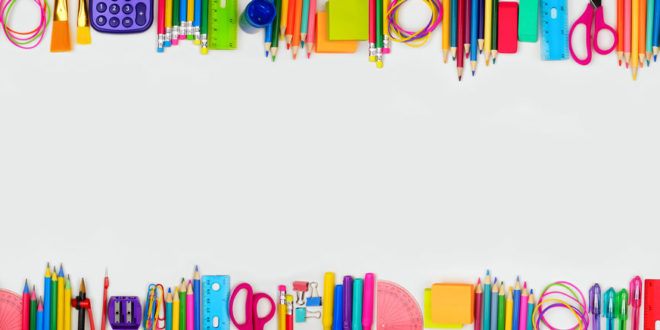School Daze
The Best and the Worst of Pandemic Pedagogy
For centuries, pedagogy has been the same old, same old: students congregate in a school, freely sharing air. Lunch is a noisy clustering of kids in a cafeteria, while recess and gym class have kids pinballing off each other. The COVID-19 has forced schools across America to reconfigure themselves on the fly — not an easy task, as the pandemic swelled and subsided and swelled again.
Adapting to remote learning brings its own set of uncertainties, like iffy (or nonexistent) internet connections and some families lacking sufficiently quiet space for learning. Then there are the logistics of gathering kids again within schools, while sanitizing and social distancing and still teaching and reaching students. There are fresh challenges for families too, as they must fashion ways to provide oversight and allocate time and space to remote learning. Here are the stories of some teachers and parents who are sustaining learning through the pandemic.
Mary Kae Walters, 2nd Grade Teacher at Robbins Elementary
For a 2nd grade teacher like Mary Kae Walters at Robbins Elementary, a classroom’s spaces are an essential tool, akin to a carpenter’s hammer, but now the issue is more about spacing than making the best use of spaces.
“The pandemic has made it very difficult to teach in the most developmentally-appropriate manner for my grade level,” Walters said. “For example, in a ‘normal’ year, I would have students moving from the carpet area, where we gather in close proximity to read a story or do close board work, back to group tables for independent work or large group seat work with each lesson.”
Research has shown that movement reboots concentration, but Walters and her students are deprived of that tool. “This year, the students are confined to their socially-distanced six-feet-apart desks for the entire day,” she said.
Walters adapts, but is still constrained. “We take brain/movement breaks, but those are limited by space, as well,” Walters said. “We normally do A LOT of partner and small group work, but again, that is not allowed this year.”
Even the most mundane activities come with checks, like lining up for lunch, bathroom breaks, and going to lockers in the hallway to put on outside gear. “Students always need to be spaced apart,” she said.
Walter’s movements are also restricted. “In the past, I would circulate around student desks much more when kids were doing independent work,” she said. “I would meet with five or six kids at a large table in the back of the room for guided reading groups, but again, we can’t do that this year.”
And the most basic tools of learning have to be quarantined. “The books that students use during these groups have to be quarantined for four days before others can use them,” Walters said.
Students can’t share any materials, such as drawing supplies, science equipment, math materials, etc. “My lessons have had to be completely changed,” Walters said. “Many personal items that I have integrated into my classroom have not come out this year, as the weekly disinfecting/cleaning procedures have been too harsh on them. I love to have real plants in my classroom, but was concerned that the spray cleaners would be toxic to the plants. These seem like small changes to an outsider, but they really do have a big impact on the classroom setting and even the feel of the classroom.”
“Second graders love to give you hugs, high fives, etc. Many students have expressed how they want to give me a hug, but can’t,” Walters said.
Joy is also shrouded by masks. “We talk about ‘seeing a smile from our eyes’ while wearing a mask,” she said, “but it isn’t the same as seeing that big smile from a second graders’ face.”
Walters is also cut off from colleagues. “Since we are in our rooms all day with our own students (except for 30 minutes at lunch when I must leave my room, as the kids eat in the classrooms), we have VERY little time to touch base with each other as we could in a normal year,” Walters said.
In short, pandemic teaching is exhausting.
“We don’t get the same time to prepare for lessons as in past years,” she said. “I do not have time to catch my breath during the day and leave school exhausted, only to go home to prep and get ready to do it all over the next day.”
However, it’s not all bad.
“The best thing about the teaching/learning arrangements this year is the small, developmentally-appropriate class sizes we have,” she said. “I feel like I know my students, as well as their families, on a much deeper level. The kids have learned to work like a close-knit family as they are with those same 12 kids during the whole day in the classroom, at recess, during lunch, etc. No one is left out or excluded. Poor behaviors are at a minimum, as everyone gets individual attention, and students hold each other accountable to make the best of the pandemic situation.”
Michelle Brettingen, 6th Grade Science & Social Studies Teacher at DeLong Middle School
Michelle Brettingen, like Mary Kae Walters, has taught for 30 years in the Eau Claire School District. The DeLong science and social studies teacher’s schedule, however, is different, as she teaches one group of sixth graders on Mondays and Tuesdays, cyber-teaches from home on Wednesdays, and teaches another group on Thursdays and Fridays. Cyber-teaching is the hardest. Surprisingly, staying at home is the hard day.
“Wednesday is exhausting,” Brettingen said. “I meet with colleagues in the morning and students in the afternoon. Virtual teaching is a lot harder. It’s harder because engaging them is harder.”
It’s partly harder because of conditions beyond Brettingen’s control.
“Some kids have great internet connections and a quiet spot to be online, and others don’t,” she said. “Some are home alone. If their siblings and parents are online at the same time, they might not have the bandwidth to download materials. Things can take too long to load, and it’s frustrating for them. The tech piece is definitely a challenge.”
The district did lubricate Wednesday’s learning.
“Our district did an amazing job of making sure that all kids have a device, and they can check out hotspots from the district, but even my own internet isn’t great because we live outside of town,” Brettingen said. “I end up doing a lot of things on my phone.”
Like Walters, Brettingen also finds her teaching constricted by the pandemic. “I didn’t realize how often I said, ‘Turn to your partner and….’ In the classroom, I have kids collaborate all the time, so I’ve had to be creative about that.”
Disinfecting further complicates the teaching. “We’re continuing to do hands-on activities and experiments and labs, so I have to clean and sanitize,” she said. “In the past, the kids would wash all the materials, and that would only take five minutes. Now I have to do that, and it takes twenty minutes. Things like the electronic balances can’t be dunked in hot, soapy water. They have to be carefully wiped by hand.”
Like Walters, Brettingen has gleaned some good things from the pandemic restrictions, such as being forced to upgrade her students’ technological and organizational skills.
“The whole building began by teaching sixth, seventh, and eighth graders how to write an email to a teacher, how to use Canvas, our virtual learning platform, and how to use Skyward, our online grading system, to increase their technology literacy,” she said. “We were very deliberate about teaching those things.”
Brettingen and her colleagues also taught their students how to plan breaks in their schedules and how to make to-do lists. “We mindfully taught those things, which are lifelong skills for the kids,” she said. “I think we should continue teaching these things once we’re through the pandemic.”
Her new schedule is also conducive to teaching science, time-wise.
“We do 90-minute blocks now, which is wonderful for science,” Brettingen said. “We really have times for labs.”
The bigger blocks are also better for emotional health. “I’m fortunate to work in a building where the social/emotional side of students’ well-being is a priority,” she said. “We decided we’d have to take care of our kids first. So, we talk with them to make sure they’re doing well — not just academically, but socially and emotionally. Longer class blocks have allowed for that.”
However, the pandemic giveth and the pandemic taketh away.
“The hardest thing about the change is only seeing kids in person two days a week,” Brettingen said. “There’s such a long time between seeing them, and giving them feedback is delayed if they submit something on Tuesday and I see them again the next Monday. I try to send them emails, but it’s not the same as being right there with them and fixing something right away.”
Eileen Perkins-Howard, 12th grade English teacher at North High School
Eileen Perkins-Howard teaches English to seniors at North High School. She, too, has to rely on technology more than ever as she’s cyber-connecting with some of her students three days a week.
“While technology has always been present in my teaching, the amount I’m relying on it this year is completely different,” Perkins-Howard said. “We are only in-person with each of our blended cohorts of students two days a week. Because of this, students are learning virtually the other three days of the week.”
However, some of her students receive all their instruction through the internet.
“Technology is even more important to the 100% virtual students I teach,” she said. “I meet with them synchronously two days a week via Teams meetings. Neither the blended cohorts or 100% virtual schedules are ideal, but teachers and students are making them work.”
Perkins-Howard also misses the daily contact and is saddened to see her students’ sociability being diminished by distance.
“Students aren’t nearly as social with teachers or their peers during class as they used to be,” she said. “I’m sure it’s due to a huge list of factors of being teens living and learning during a pandemic, but it’s been really sad to see on a daily basis. It makes me wonder what the long-term mental health impacts of the pandemic are going to be.”
Perkins-Howard, however, reaches out more than ever to her colleagues for support.
“Collaborating with my colleagues has been incredibly important,” she said. “It’s been crucial for us to work with one another. I’m incredibly fortunate to work with really smart, kind, and caring people who have the best interests of students in mind.”
And Perkins-Howard is looking forward for the good ol’ days to return.
“I miss being together with all of my students on a daily basis, and I know they miss being with all their peers, too,” she said. “Students miss the normalcy of school days, attending athletic events, pep assemblies, school dances, and other large group gatherings that are memories so many of us as adults hold dear from our teen years. Honestly, it’s hard to explain everything that is missed.”
The Rowekamp Family of the East Hill in Eau Claire
The other side of the pandemic pedagogy coin is area families, as yellow school buses no longer take their children away five days a week. The Rowekamp family of the East Hill in Eau Claire consists of Michelle, a 39-year old interior designer, Chad, a 39-year old Pepsi Sales Rep, and Owen and Molly, ages 9 and 6, who attend Flynn Elementary School. Owen attends school in person two days a week. On Thursday and Friday, his grandmother provides childcare and virtual education oversight in his home. Molly attends school four days a week.
“Both kids are home with me on Wednesday for virtual learning,” Michelle said. “They each have a list of different homework assignments to finish on their virtual learning days, and Molly has a team meeting she attends with her teacher and full class. They do fun activities and Share Time.”
It’s a brave new world that has such technology in it, but the Rowekamp kids miss the old one.
“Both my kids miss the way school used to be,” Michelle said. “They miss getting to see their friends and have play time together. They miss sitting together with friends at lunch.”
Michelle misses the old ways, too.
“It’s hard learning how to be a teacher and make sure my kids are not only doing their work, but understanding what they are doing,” she said. “There’s also knowing what assignments need to be done. Each teacher has their own system, and I need to look in several places to plan out our Wednesdays’ virtual learning plan.”
As time passes, it’s getting a bit easier for the Rowekamps, but there has been unexpected conflict, too.
“I was surprised at how obsessed my kids have become with their school-issued tablet,” Michelle said. “They constantly want to be on it, and it has caused several problems in our house.”
There are challenges for Dad, too. Chad said, “It’s a lot more of being a single parent, because when I’m at work, my wife is at home, and when I’m at home, she’s at work.”
When Chad is home from work, there’s still work to be done.
“I come home from work and then have to help the kids finish their virtual learning,” he said. “I also have to supplement the subjects not being taught anymore, for example phy ed, art, and music. The new arrangement took a lot of the fun out of school.”
Owen, the Rowekamp’s 9-year-old, misses the simple fun of sitting beside his pals. “I miss eating in the lunchroom with my friends and sitting by my bros,” he said.
The new school arrangement cuts into Owen’s fun at home, too. “You have multiple times for meetings with only 15 minutes for breaks,” he said. “It’s hard to get your stuff done. That’s not even enough time to sign on to Minecraft on the X-Box.”
At least Owen still gets to cyber-see his friends and teacher. “I like still getting to see Evan, my friend, on the screen,” he said. “I also like being able to sit on the couch and seeing my teacher at the same time.”
There’s a proverb that starts, “If you want the truth…”
So, perhaps Molly, the Rowekamp’s 6-year-old, can best summarize what’s best and worst about the pandemic and education.
The worst?
“I don’t like to wear masks, and I miss my friends,” she said.
And the best?
“I like spending time with my family and my dog.”
 Chippewa Valley 5ive for Women The Chippewa Valley’s Premier Magazine for Women!
Chippewa Valley 5ive for Women The Chippewa Valley’s Premier Magazine for Women!









